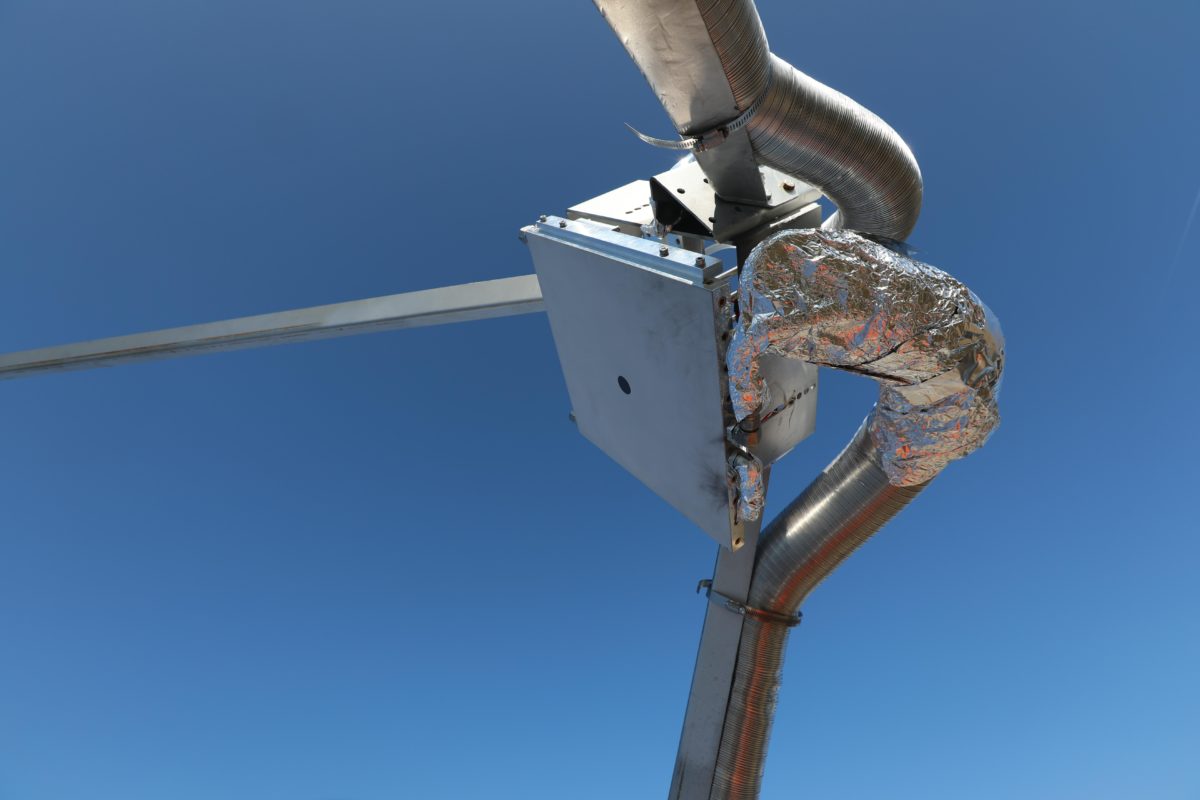Scientists at the Ecole Polytechnique Federale de Lausanne (EPFL) have developed a device to directly convert sunlight into hydrogen. By integrating a solar concentrator and smart thermal management system, the Swiss team says its device can achieve a stable 17% solar power-to-hydrogen conversion rate.
The device is described in the paper A thermally synergistic photo-electrochemical hydrogen generator operating under concentrated solar irradiation, published in Nature Energy.
One of the device’s key innovations is its use of a solar concentrator, which can boost irradiation onto it by up 474 kW/m², accompanied by a thermal management system that keeps the solar cell cool, enabling it to operate more efficiently, and transfers heat generated elsewhere in the system where it is needed.
“In our device, a thin layer of water runs over a solar cell to cool it,” said paper co-author Saurabh Tembhurne. “At the same time, the heat extracted by the water is transferred to catalysts, thereby improving the chemical reaction and increasing the hydrogen production rate.”
Costly materials
Attempts to develop a photo-electrochemical approach to hydrogen production have faced major challenges in maintaining performance levels. The need for rare and expensive materials in such devices is another obstacle to reaching commercialization. While technologies that use solar electricity to power separate hydrogen-producing electrolyzers are much more commercially advanced, the EPFL team says its device has less potential for efficiency losses as it involves fewer stages in the hydrogen production process.
The new device incorporates a PV cell based on III-V materials, which are generally considered prohibitively expensive for commercial solar applications. However, the team says concentrating more sunlight onto a smaller area means fewer such costly components are required. “If high efficiency can be maintained, these concentrated integrated photo-electrochemical devices can be economically competitive through incorporation of the best performing, though rare or expensive, materials in reduced amounts,” reads the Nature Energy article.
So promising were the results seen in laboratory testing, the team decided to upscale the device and outdoor testing featuring a 7m parabolic mirror, has begun at the EPFL’s Lausanne campus. The paper’s lead authors also have plans to commercialize their technology through a spin-off company, named SoHHytec.
“The current density and output power (27 W) achieved provide a pathway for device scalability aimed towards the large scale deployment of photo-electrochemical hydrogen production,” they state in the journal.
This content is protected by copyright and may not be reused. If you want to cooperate with us and would like to reuse some of our content, please contact: editors@pv-magazine.com.




Smart idea, hopefully they will achieve in near future .
Huge mirrors and expensive solar cells to produce a small amount of hydrogen. Seems much more efficient and cost-effective to just put up a whole bunch of regular solar panels.